Innovation is the lifeblood of motorsports – unless it gives one team a competitive advantage so significant that it upsets the parity of the product on the race track. That’s when the rulebook steps in, its pages altered to beat down the march of progress that has pushed a pilot to the head of the pack.
In addition to being the pinnacle of technological development in the racing world, Formula One is also notorious for its biting internal politics, and that reputation has seen a fair number of gee-whiz engineering achievements shine brightly and briefly before they were extinguished by the sport’s equally infamous ban-hammer.
Check out these five spectacular banned F1 technologies for the backstory on why they were nixed by the FIA et al.
Active Suspension
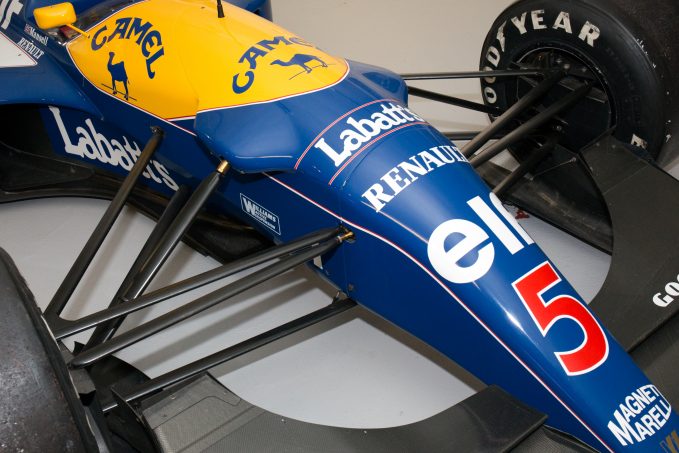
Today, it’s not unusual to find sports cars, sedans, and even huge SUVs that feature some form of active suspension system — dampers that can react to road conditions and alter how the vehicle responds when traveling over rough pavement, through a tight corner, or down a smooth stretch of asphalt. The end goal is to keep the vehicle as flat as possible so that its tires can maintain maximum contact with the ground and preserve traction and stability at all times.
In F1, however, this type of chassis design was far from welcome. Although experimentation with these kinds of active dampers had gone on through much of the ’80s, it wasn’t until 1987 that computing power caught up with the amount of data required to smooth out a race car’s ride. Lotus implemented the first active suspension system but found it too heavy to be practical (although Ayrton Senna won his first-ever F1 race in an active-equipped Lotus). Williams followed up on the concept, and after a few teething issues, it managed to score impressive results in the 1992 season with Nigel Mansell at the wheel winning a championship.
By 1993, and after investment in the technology by a number of other teams, the FIA announced a ban on active suspensions in a surprisingly roundabout way — first by declaring that its hydraulic components constituted moveable aero, a previously outlawed piece of kit, and then by pointing out the safety issues associated with hydraulic failure at high speeds. The very next year, active suspensions were out of the series.
Ground Effects
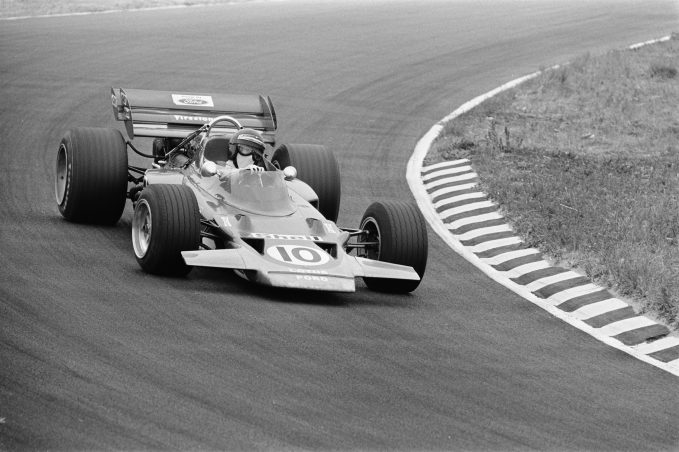
Aerodynamics wasn’t new to Formula 1 in the ’70s, but it was still somewhat of a dark art in terms of its practical application to racing cars. Over at Lotus, Colin Chapman’s experiments with a wind tunnel led to the realization that it was possible to generate huge amounts of downforce and improve cornering grip by reducing air pressure underneath the vehicle. Chapman began experimenting with building cars that used their entire bodies as wings, smoothing out airflow and channeling it where he wanted it to go. For a time, it was an effective strategy, but as other teams caught up (and began using stiffer chassis designs that were better able to execute the ground effects concept) Lotus fell behind even as cornering speeds grew to the point where shunts had become even more threatening to driver safety.
After a short-lived ban in the early ’80s (which several teams got around with height-adjustable side skirts that gave the car a flat bottom in the pits but more effective aero on the track) a series of high-profile driver deaths — including Gilles Villeneuve, Didier Pironi — combined with near-tragedies involving spectators convinced F1 that the speeds made possible by this technology were far outside the boundaries of safety. Ground effects were gone for good.
Gigantic Fans
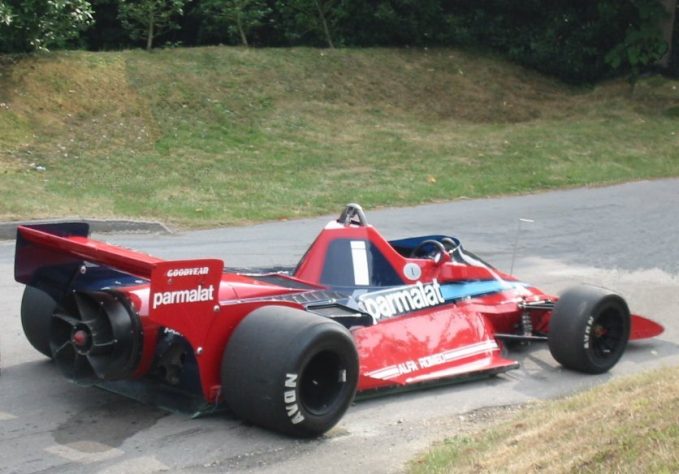
In the midst of the ground effects craze came the realization by Gordon Murray, one of the most creative men in motorsports, that it might be possible to create even more downforce by actively generating a low-pressure area under a vehicle rather than simply relying on passive techniques. What better way to do that than by installing an enormous fan on the rear of the car that — similar in concept to the original Chaparral 2J Can-Am entry — sucked air from beneath the chassis?
Thus was born the Brabham BT46B, a car that would enter only a single race in 1977 (which it won by a whopping 34 seconds over the second place finisher) before it was banned from further competition. Even better: by outlining that it was “primarily designed to cool the engine,” and not provide “active aerodynamics,” the innovation stayed within the letter of the existing rulebook at the time. Citing stones and other junk being blown at them by the fan, however, and nursing wounded egos at how badly they had been beaten, the other teams complained to the point where Bernie Ecclestone, Brabham’s owner, bowed to the pressure and parked the BT46B forever.
Image source:
Six-Wheeled Cars
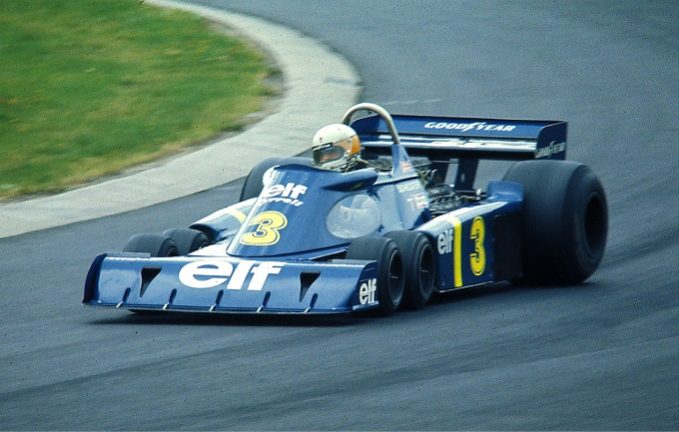
The six-wheeled Tyrrell car of 1976, a famous oddball in its blue Elf livery, was far more than a novelty — it was a legitimate threat to the established F1 order of the day. By adding a set of four small wheels up front instead of relying on a pair of massive slicks, Ken Tyrrell was able to achieve a number of impressive cheats on the laws of physics. The first was aero. Smaller tires presented a lower profile to the wind rushing over them at speed, thus dropping drag. Next up? Grip. A set of four tires offered more road contact when turning than a single pair, even at their reduced size.
ALSO SEE: Top 10 Coolest Formula 1 Technologies and Why They Matter to You
Tyrrell’s P34 6-wheeler wasn’t as quick as it could’ve been, winning only a single race during its single season of competition before the team dropped the idea and went back to the drawing board. After a number of other teams tried, off and on, to make a six-wheeled car competitive in testing, it would take the success of Williams to catch the eye of F1 authorities. This time, the engineers swapped things around and put four small rims at the rear. The reason why was quite different from Tyrrell’s take on aero, as the double axles allowed Williams to more effectively extend and wrap its ground effects body around the back of the car and improve grip. The car was also better in the rain, as the grooved tires up front cleared a path for the slicks behind them.
Dubbed the FW08B, the car was amazingly quick in testing, despite its extra weight, but Formula One’s governing body had had enough of six-wheeled monstrosities and killed the Williams effort in 1983 by outlawing not just entries with more than four wheels, but anything that drove more than two – a double-whammy for the “4WD” FW08B.
Turbine Engines
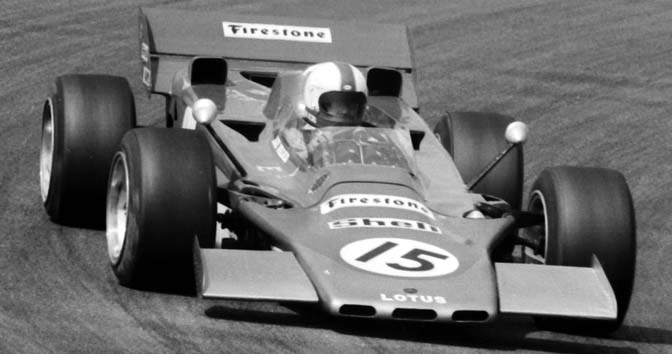
Turbines have never hit the street from a major auto manufacturer because their immense power potential is balanced out by the fact that they are horribly inefficient unless they are being run at full gallop. In oval racing, which doesn’t feature the same stop-and-go dynamics as daily driving, this is less of an issue, which caused open-wheel racers in the United States to experiment with the technology throughout the 1960s.
By 1968, Colin Chapman, of course, was working on a turbine design of his own for Indy, and eventually, in 1970, it was ported over to his Formula 1 effort. Using a Pratt & Whitney engine married to a 56B chassis, the Lotus team began testing the car and found that while quick, it suffered from serious throttle lag when amping up between power states (both on and off the pedal). It also ate brakes like they were candy, as the Chapman implementation used no gearbox and relied on the car’s stoppers to attenuate the off-throttle lag when trying to decelerate.
The car was weird and it confounded drivers throughout the 1971 season, with a mixture of results illustrating just how difficult it was to drive effectively. Lotus eventually pulled the 56B turbine car out of competition at the end of that season, and over time engine regulations crept up to the point where only very specific power plant designs were allowed to participate, essentially banning this brief dalliance with jet-age tech.
Image Source: Raimund Kommer via Wikimedia Commons


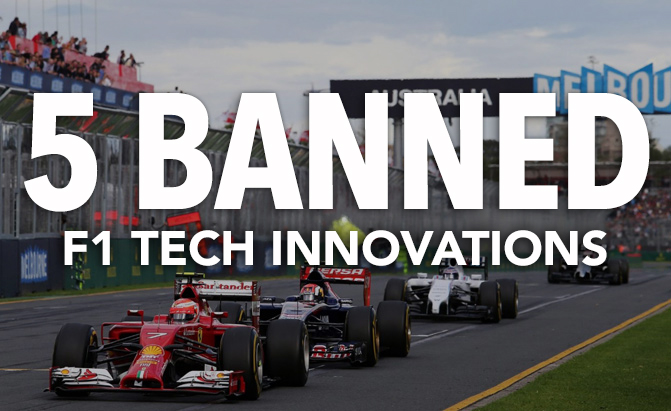
Leave a Reply